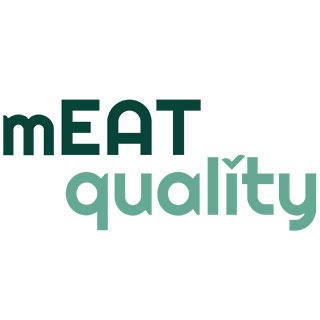
Exploring the benefits of PCV-2 blanket vaccination in sows
The average piglet birth weight from the 3 groups of vaccinated sows was statistically higher than that from the unvaccinated sows.
The pig sector events all around the world
Weekly newsletter with all the pig333.com updates
Swine industry news in your email
Pig health: news and articles on PRRS, PCV2, biosecurity, etc, Pig disease guide, atlas of pathology, clinical cases…
Biocheck.UGent is an independent, risk-based, scientific scoring system for assessing the quality of your on-farm biosecurity.
A visual and practical step-by-step guide on how to perform a necropsy on a pig.
All the information about ASF: how to recognize the disease, how it is transmitted, pictures of lesions, latest news, guides, etc.
All the information on Foot and Mouth Disease in pigs: how to recognize the disease, how it is transmitted, images of lesions, latest news, guides,...
Description of the most important diseases and conditions in pigs
Images of major swine diseases
Pig disease diagnostic tool
Definition for the most commonly used pig terms
Simulator that calculates the amount of drug to add to the water when using a flow dispenser.
Weekly newsletter with all the pig333.com updates
Pig Prices by countries. Pork production and trade. News of the pig market and the raw materials
The latest slaughter pig prices in the most important pig markets. Check the evolution of the historical prices in charts and in several currencies.
Latest quotations for the main commodities used in pig feed. Historical graphs with the pig price and estimated feed price.
Figures & trends in pig numbers, pork production and pork trade.
Global production and trade data for the most important raw materials
Weekly newsletter with all the pig333.com updates
Articles on nutrition and pig feeding, characteristics of raw materials and additives for pig feed. Prices of raw materials
Latest quotations for the main commodities used in pig feed. Historical graphs with the pig price and estimated feed price.
Technical sheets of the main raw materials and additives used in swine feed. They include a comparison of nutritional values from various sources, product
Global production and trade data for the most important raw materials
Definition for the most commonly used pig terms
Use this tool to diagnose problems with the feed conversion ratio. Click on the flowchart or on the buttons within the text to navigate through the different parts of the tool.
A biweekly newsletter with the latest developments in swine nutrition
Articles on genetics and pig reproduction: genetic improvement, genomics, artificial insemination, use of hormones
Compare production data, calculate the number of sow, nursery, and finishing spaces, and visualize your tasks on the work schedule by type of BMS.
Tool that allows you to calculate the replacement rate in your farm
Definition for the most commonly used pig terms
Use this tool to find out why your farrowing rate is less than ideal. Click on the flowchart or on the buttons found within the text to navigate through the different parts of the tool.
Weekly newsletter with all the pig333.com updates
Management, pig farm management, work planning in each production stage: management in gestation, grow finish, batch farrowing
Compare production data, calculate the number of sow, nursery, and finishing spaces, and visualize your tasks on the work schedule by type of BMS.
Tool that allows you to calculate the replacement rate in your farm
Definition for the most commonly used pig terms
Weekly newsletter with all the pig333.com updates
Design of facilities and equipment for pig farms: building design, climate control, feeding systems, etc.
Biocheck.UGent is an independent, risk-based, scientific scoring system for assessing the quality of your on-farm biosecurity.
Environmental Footprint Calculator along the pork value chain.
Definition for the most commonly used pig terms
Simulator that calculates the amount of drug to add to the water when using a flow dispenser.
Use this tool to explore which slurry management strategy best fits your situation. Click on the flow chart or on the buttons within the text to navigate through the different parts of the tool.
Weekly newsletter with all the pig333.com updates
What makes us stand out is the quality and independence of our contents. Find out about the authors who make it possible. Our goal is to generate a virtual community of advanced users in the sector.

Sergio López Soria was born in Esplugues de Llobregat (Barcelona) in 1977 and became a DVM from the Veterinary Medicine Faculty of the Autonomous University of Barcelona (UAB) in 2001. In 2010 he obtained his diploma from the European College of Porcine Health Management. He started his research career in 2002 in the Animal Health Department at the UAB, studying epidemiologic aspects of the porcine circovirus type 2 (PCV2). Since 2003 he is part of the Centre de Recerca de Sanitat Animal (CReSA, Animal Health Research Centre), where he has participated in more that 100 preclinical and clinical tests with biological, pharmacological and nutraceutical products intended for veterinary use; as well as in 10 national and 3 European projects associated with animal health in livestock species.
As a result of his research activity he is co-author of 20 articles published in international journals (11 of them related to the PCV2), and totals 49 contributions in congresses.
Updated CV 14-May-2013

The average piglet birth weight from the 3 groups of vaccinated sows was statistically higher than that from the unvaccinated sows.

This article deals with the factors to be considered for deciding the optimal time of vaccination against PCV2 and shows the results of a study that evaluates the efficacy of different vaccination programs in PCV2 subclinically infected piglets.

The loss associated with decreased ADWG was of 13.1 € and 7.5 €/pig at 21 weeks of age for pigs with high and medium serum PCV2 load under the scenario studied.

The virus is highly resistant in the environment, showing also high resistance to chemical and thermal treatments.

The PCV2 has been associated, in an ongoing way and throughout time, with more pathologies called, collectively, diseases associated with the PCV2 (PCVDs): PCV2 systemic disease, PCV2 lung disease, PCV2 enteric disease, PCV2 reproductive disease,PCV2 subclinical infection and porcine dermatitis and nephropaty syndrome.

Novelties about the excretion routes, the transmission routes, the risk factors, etc., and explanation about how the PCV2 becomes a pathogenic virus.

The most effective way of avoiding the production losses associated with the PCV2 consists in avoiding the appearance of the viraemia by inducing a passive or an active immunity that minimizes the circulation of the virus in the farm.
Welcome to 333
Connect, share, and interact with the largest community of professionals in the swine industry.
Celebrating 196373Users on 333!
Sign upAlready a member?





